I watch shoppers drift between aisles and feel their attention slip. That is the problem. When my display lifts a product above the noise, sales rise. I must keep that focus.
Product identity grows when a cardboard display box links shape, print, and placement so shoppers spot, remember, and trust the item at once.
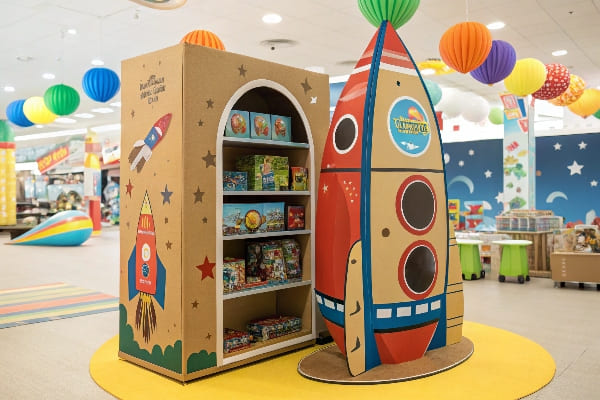
A clear idea of identity can lift even a simple box into a silent salesperson. Stay with me and I will break the idea into small, useful pieces you can use today.
What are the characteristics of cardboard packaging?
Every product needs a skin that is light, strong, and cheap. Cardboard seems simple, yet tiny design choices decide if it protects or breaks, sells or sits.
Cardboard packaging is lightweight, recyclable, printable, price-friendly, and strong enough for most consumer goods.
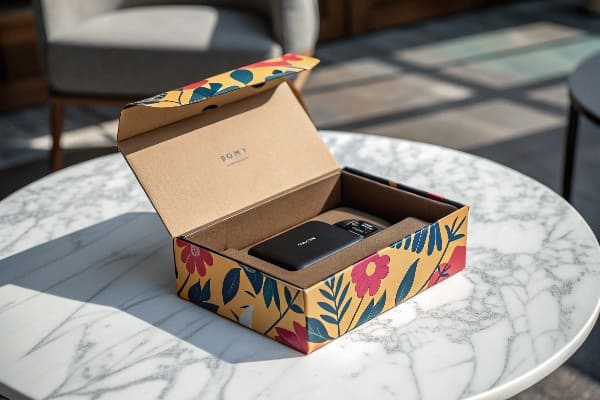
The core properties explained
| Characteristic | Plain meaning | Common risk if ignored |
|---|---|---|
| Weight | Light to ship and stock | Too thin boards sag under load |
| Strength | Flute design adds crush resistance | Wrong flute grade can crack corners |
| Printability | Accepts vivid CMYK ink | Low-grade liner washes color out |
| Sustainability | From recycled fibers | Wet waste contaminates batch |
| Cost | Less than wood or metal | Over-spec raises unit price |
I run three converting lines, so I see these traits every day. A single change—like switching from B-flute to E-flute—cuts weight by 20 % for small gift boxes. That saves freight for my U.S. clients, yet still holds shape because I add a high-burst liner1. Print is the next lever. Digital CMYK2 lets me match a client’s brand green within Delta E < 2 on each lot, so rows of boxes look like one wall of color. When we miss that tolerance, stores reject the load and my profit sinks. Moisture is another silent killer. Guangdong’s humid summers warp stock if I skip a four-hour pre-dry. I learned this the hard way on a crossbow display run for David at Barnett Outdoors. The first batch bowed, rifles rolled, and he was not happy. I installed inline dehumidifiers, and the next batch stood straight for eight weeks of in-store testing. Cost control is always last. I map sheet size to cutting dies so waste stays under 8 %. Small gains there pay for thicker liners where the display needs it most. Cardboard sounds boring, but each little choice can grow or kill a launch.
What are custom display boxes?
A shelf is crowded. A stock box blends in. A custom display box breaks that pattern with shape, shelf fit, and story that belongs only to one brand.
Custom display boxes are tailor-made structures and graphics built for a single product’s size, weight, launch story, and retail space.
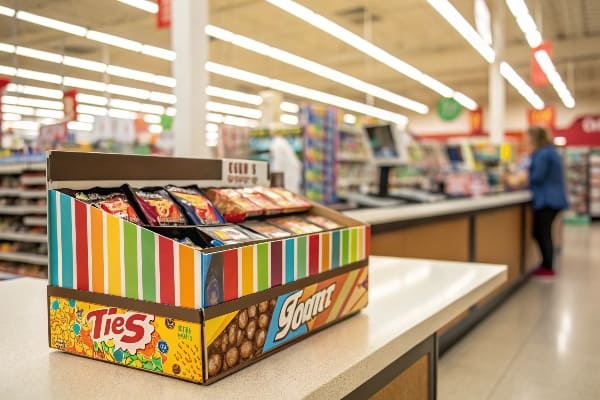
Why “custom3” matters
| Factor | What I can change | Direct gain for buyer |
|---|---|---|
| Structure | Die-cut shape, tiers, hooks | Fits odd tools, raises stock, reduces restock time |
| Graphics | Brand color, logo, promotion copy | Instant shopper match to ad campaign |
| Footprint | Width, depth, fold-flat size | Uses every inch of paid shelf rent |
| Assembly | Pre-glue, auto-pop, tool-free | Store staff set up in under 30 s |
| Quantity | MOQ 50 pcs or 50 000 pcs | Scales from pilot to nationwide |
I like to start with a question: “What job must this box do in three seconds?” That keeps the design honest. For a hunting broadhead set, I added a clear PET window shaped like a sight reticle. Shoppers saw real steel points without opening the pack, so theft dropped 15 %. For a vegan snack bar, I used a slanted front wall that serves as both tray and billboard, saving one extra shelf tag. Custom also means matching logistics. Barnett ships on mixed pallets to Cabela’s. I therefore design boxes that fold flat to 5 mm, stack 100 per export carton, and pop up with one thumb press. This reduces air freight volume by 40 %. My factory pre-glue4s crash locks, so store clerks avoid tape. A tight circuit from sketch to 3D render to white sample fixes errors early. I offer free sample tweaks because I make money on reorders, not first runs. Custom is not fancy; it is focused utility that earns space in the truck, on the shelf, and in the shopper’s mind.
What are cardboard display boxes?
Walk into a pharmacy endcap and you will see a tall stand made of board, full of small packs. That is a cardboard display box doing its quiet job.
Cardboard display boxes are freestanding or counter units made of corrugated board that hold, present, and sometimes dispense retail goods.
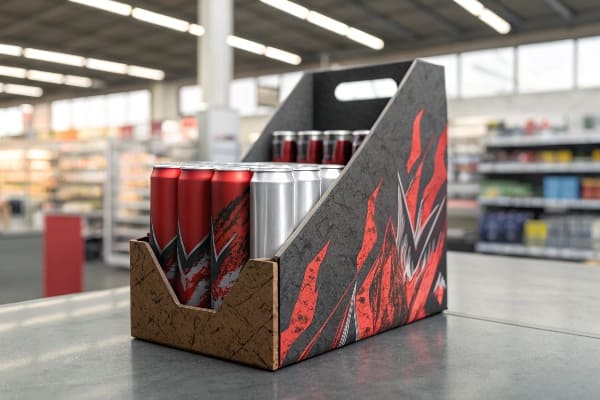
Types and their uses
| Type | Typical height | Ideal product | Key benefit |
|---|---|---|---|
| Counter tray | 5–10 in | Candy, lip balm | Impulse next to register |
| PDQ (Pretty Darn Quick) | 4–6 in | Small electronics | Ships in same pack it sells from |
| Floor stand | 48–60 in | Toys, crossbows | Owns an aisle endcap |
| Pallet skirt | 40 in | Bulk snack bags | Fast warehouse roll-out |
| Power wing | 12–24 in | Batteries, tools | Hangs on rack side |
I build all five styles in the same plant, but each asks for a different flute and coating. A counter tray uses single-wall E-flute5 with a gloss varnish because shoppers touch it. A floor stand for 15 lb crossbows must bear 75 lb total, so I insert an H-shape inner frame6 and laminate double-wall BC-flute. Retail chains demand setup in minutes. For Home Depot, I add QR labels on each panel. Staff scan and watch a 30-second video of me folding the demo. This cut setup errors by half. Display boxes also travel long miles. I design knock-down kits: five panels, four plastic clips, and a color-coded diagram. One large skid holds 250 kits. That density slashes ocean freight. In the store the unit looks custom, yet costs like stock because all parts share tooling across clients. Strength testing is my security. In the lab I load sandbags until the base fails. Only then do I show numbers to buyers. When they see a 3× safety factor7, purchase orders move fast. A display box is never just a box; it is a mini stage that must hold weight, scream brand value, and die quietly in the recycler when the promo ends.
What is the purpose of a cardboard box?
People think a box is only to hold things. That is half the story. A box must protect cost, move brand, and guide logistics in one simple form.
The purpose of a cardboard box is to protect goods, simplify transport, display brand messages, and recycle easily after use.
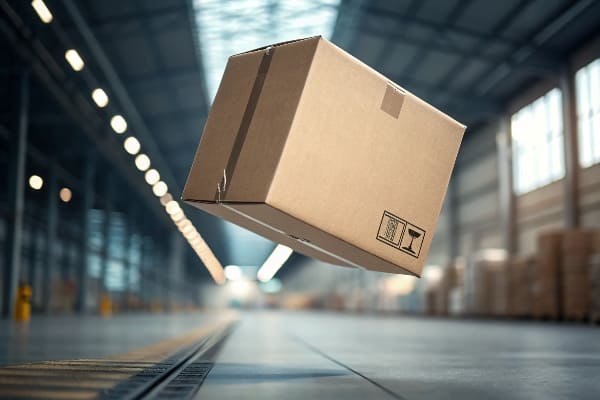
Four jobs of one box
| Job | Real-world effect | My control lever |
|---|---|---|
| Protect | Prevent dents, water, UV | Choose flute grade, add PE film |
| Move | Stack on pallet, fit truck | Make size match 48×40 in pallet |
| Sell | Carry graphics and story | Use high-contrast print, spot UV |
| Recycle | Close the loop | Select FSC board, soy ink |
Protection comes first. I calculate compression strength8 with McKee’s formula, then add 20 %. If the supply chain is rough—say from Guangzhou port to Chicago rail yard—I test drop at 18 in on edges. Next, movement. Pallet efficiency pays the freight bill. I design box footprints so 96 units fill one 40 ft HQ with no void. That saved Barnett $12 000 last season. Selling is the fun part. Matte black flood coat with a gloss deer silhouette made the crossbow box look premium at Bass Pro. Shoppers snapped photos and shared them online, giving free ads. Last, recycle. Retailers now audit packaging waste. I use 100 % recycled liners9 and water-based glue. When I print a large QR that links to disposal tips, stores score higher on their green report and keep me on the vendor list. These four jobs seem simple, yet together they define whether a product arrives safe, looks right, and meets the brand promise.
Conclusion
Cardboard seems plain, yet with clear design goals it becomes a tool that protects, sells, and supports the brand in one smart move.
Learn about high-burst liners and their role in maintaining packaging integrity, especially for lightweight boxes. ↩
Explore how Digital CMYK enhances print quality and color matching, crucial for brand consistency and customer satisfaction. ↩
Exploring this link will provide insights into how custom packaging can enhance product visibility and sales effectiveness. ↩
Understanding pre-glue packaging can reveal how it streamlines assembly and reduces labor costs, benefiting retailers significantly. ↩
Explore this link to understand the unique properties of single-wall E-flute and how it enhances packaging solutions. ↩
Learn about the H-shape inner frame’s role in providing strength and stability to display stands, crucial for retail success. ↩
Discover the importance of a 3× safety factor in ensuring product reliability and safety in various applications. ↩
Understanding McKee’s formula can enhance your packaging design, ensuring better protection and efficiency in shipping. ↩
Discovering the advantages of recycled liners can help you make eco-friendly choices that benefit both the environment and your brand’s image. ↩

